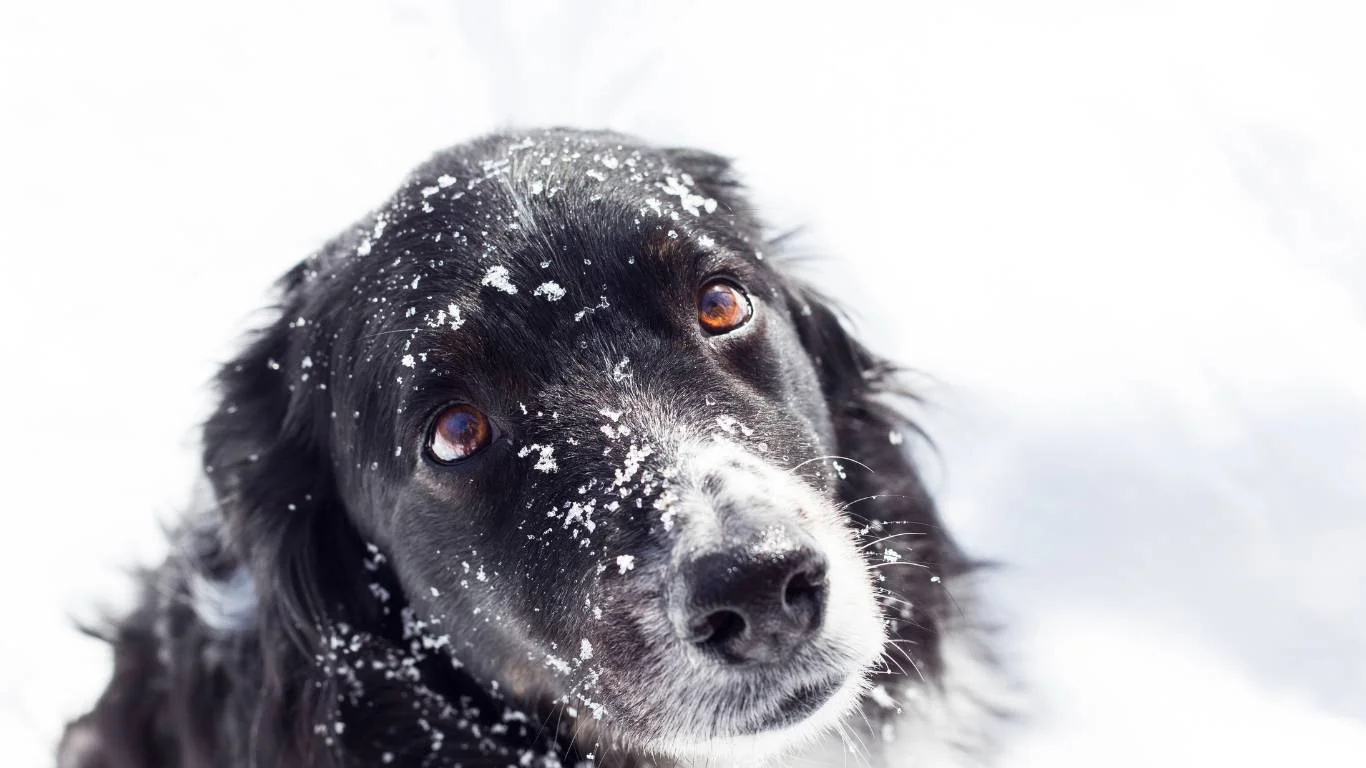Discover How to Reduce Dog Shedding Naturally: 5 Simple & Effective Tips
As a veterinary assistant with a special focus on nutrition, I’ve seen a lot of pet owners struggle with shedding issues in their dogs. Whether you’re tired of fur all over your furniture or simply want to improve your dog’s overall health, one of the most common questions I get is: How to reduce dog shedding naturally? If you’re dealing with this issue, I totally understand the frustration. Shedding is a natural process for dogs, but it doesn’t mean you have to put up with it endlessly. In this guide, I’m going to share tips and tricks, grounded in real experience and research, on how you can reduce shedding without resorting to chemicals or expensive treatments.
Understanding Dog Shedding: Why It Happens

Before we dive into solutions, let’s first talk about why shedding occurs. All dogs shed to some extent—it’s a completely normal process that helps them maintain healthy skin and fur. But depending on the breed, diet, health status, and environment, shedding can vary significantly.
When your dog sheds, they’re getting rid of old or damaged hair to make room for new growth. Some breeds shed more than others, particularly those with thick, double-layered coats. However, even breeds that don’t shed as much can experience periods of excessive shedding, especially during seasonal transitions. As a vet assistant, I’ve seen that diet and health play huge roles in how much a dog sheds. If your dog’s shedding seems excessive or irregular, it could be a sign that something isn’t quite right with their health, which is why it’s essential to be attentive to their diet, grooming, and overall well-being.
The Role of Diet in Shedding

Now, let’s talk about one of the most important factors in shedding: diet. As someone with a focus on nutrition, I can’t emphasize enough how much food affects your dog’s coat. Just like humans, dogs need a balance of nutrients to stay healthy. A poor diet can lead to dry, flaky skin and more shedding. On the flip side, a well-balanced, nutritious diet can help reduce excessive shedding and keep your dog’s fur soft and shiny.
- Omega-3 fatty acids: These essential fats are crucial for maintaining healthy skin and a shiny coat. Omega-3s help reduce inflammation and can even prevent some of the dry, itchy skin that leads to shedding.
- Biotin: Biotin is a B-vitamin that’s essential for skin health and hair growth. Dogs with a biotin deficiency may shed more than usual.
- High-quality proteins: Dogs need adequate protein to support healthy hair follicles and tissue regeneration. If your dog’s food contains low-quality proteins, they might experience more shedding.
When choosing food for your dog, look for those that are rich in natural ingredients and include a good mix of proteins, omega fatty acids, and vitamins. A good diet goes a long way in reducing shedding naturally, and it’s something I’ve seen firsthand in my career as a vet assistant. I’ve noticed that dogs who eat a high-quality, balanced diet have much healthier coats and shed less overall.
Grooming: The Key to Reducing Dog Shedding Naturally

Grooming isn’t just about keeping your dog looking cute—it’s one of the most effective ways to reduce shedding, and it’s totally natural! Regular brushing helps remove loose hair before it can end up on your couch, bed, or carpet. Not only does this reduce shedding, but it also helps with circulation, distributes natural oils across your dog’s coat, and keeps their skin healthy.
Choosing the Right Brush for Your Dog
Not all brushes are created equal. Depending on your dog’s breed, coat type, and shedding level, you’ll need different grooming tools. For example, short-haired dogs might benefit from a softer brush, while long-haired breeds may require a comb or a slicker brush to untangle mats. Here’s a breakdown of common brushes:
- Slicker brushes: These are great for long-haired dogs and help remove mats and tangles.
- Undercoat rakes: If you have a dog with a thick double coat (like Huskies or Golden Retrievers), an undercoat rake can help remove the dense undercoat and reduce shedding.
- Rubber brushes: These are gentle and great for short-haired dogs, especially those that shed frequently.
I recommend brushing your dog at least once or twice a week, but dogs that shed more heavily may benefit from daily brushing sessions. It’s not just about keeping the house clean—it’s also a bonding experience for you and your pet!
Supplements That Can Help with Shedding

If you’re looking for a more targeted approach to reducing shedding, you might want to consider adding some natural supplements to your dog’s routine. As a veterinary assistant with a nutrition background, I’ve seen a lot of pet owners have success with supplements that help improve skin health and coat condition. These can complement your dog’s diet and grooming routine, offering additional support for shedding issues.
1. Omega-3 Fatty Acids
As I mentioned earlier, omega-3 fatty acids are key players when it comes to maintaining a healthy coat and reducing shedding. These essential fats help reduce inflammation, improve skin hydration, and support hair growth. If your dog’s diet doesn’t already include sufficient omega-3s, you might want to consider supplementing with fish oil or flaxseed oil. I’ve personally recommended these to pet owners, and the results are often visible in just a few weeks—glossier fur and a noticeable decrease in shedding.
2. Biotin
Another supplement that can work wonders for reducing shedding is biotin. Biotin is a B-vitamin that plays an important role in maintaining healthy skin and promoting hair growth. When dogs are deficient in biotin, they can experience skin issues like dry, flaky skin, which often leads to more shedding. Adding a biotin supplement to your dog’s routine can help support their skin health and reduce excessive shedding. I’ve seen clients see huge improvements in their dog’s coat condition after introducing biotin-rich supplements, so it’s definitely worth considering!
3. Vitamin E
Vitamin E is another powerful supplement that can help with shedding. This antioxidant supports skin health by protecting it from damage caused by free radicals. It also helps to maintain the natural oils in your dog’s coat, keeping their fur soft and healthy. I’ve had dogs with dry, brittle fur benefit from adding vitamin E to their daily routine. Vitamin E can be found in both topical forms (like oils) or oral supplements. Either way, it’s a great addition to your pet’s shedding-reduction plan.
Bathing: A Key Step in Managing Shedding

While grooming is essential for shedding control, bathing your dog regularly (but not too frequently) is just as important. Bathing your dog with the right shampoo can not only clean their coat but also help reduce shedding by removing dead skin cells and excess fur. However, I can’t stress enough how important it is to choose the right products. Over-bathing or using the wrong shampoo can strip your dog’s skin of its natural oils, leading to dryness and more shedding. I’ve seen it firsthand—using a high-quality, gentle dog shampoo can make a big difference in the texture of their coat and the amount of shedding.
Choosing the Right Shampoo
When selecting a shampoo for your dog, it’s crucial to find one that’s designed specifically for their skin type and needs. Look for shampoos that contain natural ingredients, such as oatmeal, aloe vera, or chamomile, which can soothe the skin and help reduce irritation that might lead to shedding. I always recommend opting for gentle, moisturizing shampoos that won’t dry out your dog’s skin.
- Oatmeal-based shampoos: These are great for dogs with sensitive skin. Oatmeal helps calm irritated skin and reduces itching, which can indirectly help with shedding.
- Aloe vera shampoos: Aloe vera is known for its soothing properties. It helps keep your dog’s skin hydrated and prevents dryness that can lead to shedding.
- Hypoallergenic shampoos: If your dog has allergies or very sensitive skin, hypoallergenic shampoos are a good choice to avoid any irritation that might increase shedding.
How Often Should You Bathe Your Dog?
Bathing too often can dry out your dog’s skin, so it’s important to find a balance. For most dogs, bathing once a month or every six weeks is sufficient. However, if your dog has a thick coat or is prone to allergies or skin conditions, they might need baths more frequently. In my experience, dogs with a healthy, balanced coat don’t need frequent baths, but it can vary depending on your dog’s breed and lifestyle.
Environmental Factors: How They Affect Shedding

In addition to diet, grooming, and supplements, environmental factors also play a huge role in shedding. I’ve seen how things like temperature, humidity, and even stress can influence how much a dog sheds. For example, dogs living in hot climates or experiencing changes in weather tend to shed more frequently to regulate their body temperature. Similarly, stressful situations—like moving to a new home or experiencing separation anxiety—can also trigger more shedding.
1. Temperature and Seasonal Changes
Many dogs shed more heavily during the change of seasons. This is due to the shedding cycle, which helps them adjust their coats for different temperatures. During warmer months, they’ll shed their thick winter coat, and in the fall, they’ll grow a thicker one to prepare for the cold. This type of shedding is completely natural, but it can still be frustrating to deal with. To manage seasonal shedding, it’s important to keep up with regular grooming and make sure your dog is getting proper nutrition to support this change.
2. Stress and Anxiety
Just like humans, dogs can experience stress and anxiety, and one of the side effects of this emotional turmoil is increased shedding. Whether it’s a move, a change in routine, or loud noises, stress can cause your dog to shed more than usual. If you suspect your dog’s shedding is due to stress, I recommend looking into ways to reduce anxiety, such as creating a calm environment, engaging in more physical activity, or using calming products like pheromone diffusers. In my experience, taking steps to ease a dog’s anxiety can significantly reduce shedding caused by stress.
Professional Help: When to Visit the Vet for Excessive Shedding

Despite all the natural remedies and lifestyle changes you try, there may come a point when your dog’s shedding seems beyond your control. This is where a visit to the vet becomes important. As much as we want to reduce shedding at home, sometimes excessive hair loss can signal underlying health issues that need professional attention. In my role as a veterinary assistant, I’ve witnessed firsthand how serious medical conditions can manifest as increased shedding. So, when should you take your dog to the vet for shedding problems?
Signs That Indicate You Should Seek Veterinary Care
If your dog’s shedding is accompanied by other symptoms, it’s essential to take action. Here are some signs that should prompt a visit to the vet:
- Excessive or abnormal shedding: If the shedding seems far beyond what is typical for your dog’s breed or age, it could indicate something more serious. While all dogs shed to some degree, abnormal shedding—especially if it’s constant or rapid—can point to health problems.
- Patchy hair loss: If your dog is losing hair in specific areas or developing bald patches, this may be a sign of a skin infection, parasites, or even hormonal imbalances.
- Itchy or inflamed skin: Itching, redness, or swelling in the skin may indicate allergies, infections, or fleas. These conditions can cause excessive shedding and discomfort for your dog.
- Visible signs of parasites: If you notice fleas, ticks, or other parasites on your dog, it’s crucial to address the issue right away. These pests can contribute to shedding and cause serious health problems.
- Changes in behavior or appetite: If your dog starts showing signs of lethargy, decreased appetite, or abnormal behavior along with shedding, these can be signs of an underlying illness that needs medical attention.
When in doubt, it’s always better to be safe and consult your vet. They can perform a full examination, conduct blood tests, and recommend the appropriate treatments if necessary. If your dog’s shedding is linked to an underlying health condition, early intervention can make all the difference in their recovery.
Tips for Managing Shedding in Dogs with Specific Health Conditions

If your dog has a health condition that is causing excessive shedding, there are additional steps you can take to help manage the situation. Here are some tips that I’ve learned from my work in veterinary care, which might help your dog feel more comfortable and reduce shedding:
1. Managing Allergies
Allergies are one of the leading causes of excessive shedding in dogs. They can develop due to food, environmental factors like pollen or dust, or even contact allergens like certain fabrics or shampoos. If your dog is dealing with allergies, you’ll want to work with your vet to determine the cause and find the best treatment plan.
Often, this will involve dietary adjustments or medications to help reduce inflammation. Special hypoallergenic dog food may be prescribed to help ease food allergies, and medications like antihistamines or steroids can help control environmental allergies. As a veterinary assistant, I’ve seen many dogs experience significant improvements after their allergies were identified and treated.
2. Skin Infections and Parasites
Fungal infections, bacterial infections, and parasites like fleas or ticks can also lead to increased shedding. If your dog is scratching excessively, or if you notice any skin abnormalities, it’s essential to get them checked by a vet. Fungal infections, such as ringworm, and bacterial infections can cause hair loss and excessive shedding if left untreated.
For parasitic infestations, a regular flea and tick prevention regimen is key. Your vet can recommend the most effective treatments, which may include topical treatments, oral medications, or shampoos designed to eliminate these pests. Regular grooming and bathing can also help control infestations before they get out of hand.
3. Thyroid Issues and Hormonal Imbalances
Thyroid problems, particularly hypothyroidism, are another common cause of shedding in dogs. Dogs with hypothyroidism experience a slower metabolism and often exhibit symptoms like weight gain, lethargy, and thinning fur. If you notice signs of thyroid problems along with excessive shedding, your vet may recommend blood tests to check your dog’s thyroid levels.
Hormonal imbalances, including those caused by spaying or neutering, can also affect shedding. In such cases, a vet may adjust your dog’s diet or recommend hormone therapy to help balance their levels and reduce excessive hair loss.
Preventing Shedding in the Long Term
While it’s impossible to completely eliminate shedding in dogs, there are plenty of steps you can take to minimize it in the long term. A holistic approach, which combines diet, grooming, and regular veterinary care, is key to reducing shedding and ensuring your dog stays happy and healthy.
1. Consistent Grooming Routine
Maintaining a regular grooming schedule is one of the best ways to keep shedding under control. Brush your dog frequently (depending on their coat type) to remove loose hair before it ends up on your furniture. Brushing also helps to distribute natural oils throughout your dog’s coat, keeping it healthy and shiny. I’ve found that regular grooming, along with the right tools, can make a noticeable difference in shedding over time.
2. Healthy Diet and Supplements
A healthy, well-balanced diet goes a long way in promoting a shiny coat and reducing shedding. Foods rich in omega-3 fatty acids, proteins, and biotin are essential for maintaining healthy skin and fur. In addition to a good diet, consider supplementing with omega-3s, biotin, and other vitamins as recommended by your vet. These nutrients will help support your dog’s coat health in the long run.
3. Regular Vet Check-Ups
Routine veterinary visits are essential for catching any potential health problems early, including those that can affect shedding. Regular check-ups ensure that your dog’s skin and coat are healthy and that any underlying conditions are addressed before they lead to more severe problems. I recommend keeping up with yearly exams, even if your dog seems perfectly healthy.
References
Disclaimer: The information provided in this article is for general informational purposes only and is not intended as a substitute for professional veterinary advice, diagnosis, or treatment. Always seek the advice of your veterinarian or other qualified health provider with any questions you may have regarding your pet’s health.






